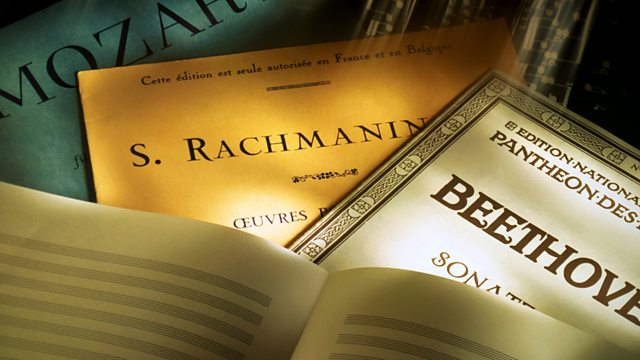Beethoven's Spring Sonata
Frances Fyfield returns to the Austrian National Library to examine the score of Beethoven's beautiful sonata for violin and piano that became known later as the 'Spring' sonata.
Although the Austrian National Library has a spectacular array of autographed classical music manuscripts by Bruckner, Brahms, Schubert, Mozart and Richard Strauss, the choice for this final programme in the latest series of Tales from the Stave comes from the Librarian Dr Thomas Leibnitz.
Beethoven's Spring Sonata of 1801 might lack the grandeur of his 7th or 9th Symphony but it was commissioned by the same Viennese banker as the former. It's not even his most taxing Violin sonata. That accolade usually goes to the Kreutzer. However the manuscript, complete with a relatively young Beethoven's grumblings about his copyist, is full of examples of detailed reworking and careful crafting that give a vivid insight into a man with far more than a sense of Sturm und Drang, gravity and drama.
Violinist Florian Zwiauer and pianist Jan Jiracek von Arnim join Dr Leibnitz as they work through the three manuscript movements of a work which was eventually published in four.
As well as trying to establish where the missing movement has gone they examine the unusually neat handwriting which makes it equally unusually clear how the composer set about his work and sought to refine it and deliver a meticulous score for the publisher.
While the opening theme was later described, and more importantly marketed by 19th century publishers, as an evocation of Spring, Florian Zwiauer believes it's the slow and reverential second movement that should have given the piece an altogether more anglophile name - the Evensong sonata.
Producer: Tom Alban.
Last on
More episodes
Previous
Next
You are at the last episode
Broadcasts
- Tue 10 Mar 2015 11:30±«Óãtv Radio 4
- Mon 14 Dec 2015 16:00±«Óãtv Radio 4
Seven disastrous classical music premieres that went on to be hits
First night (mares) featuring drunk conductors, rioting audiences and hidden trapdoors.

